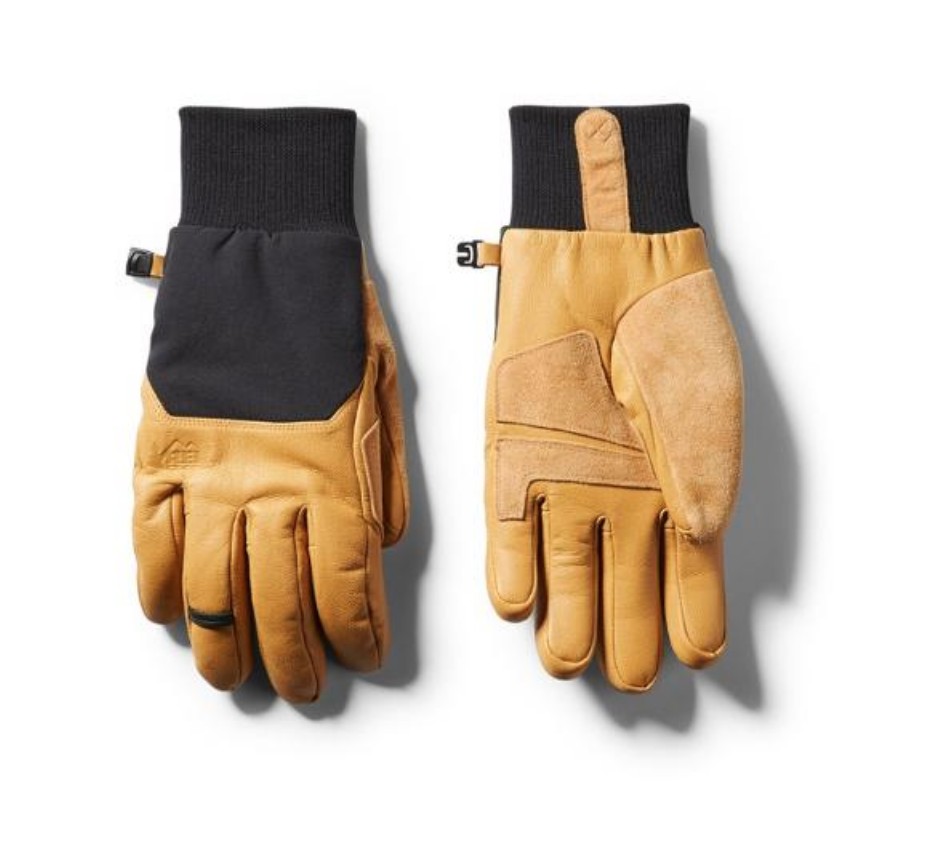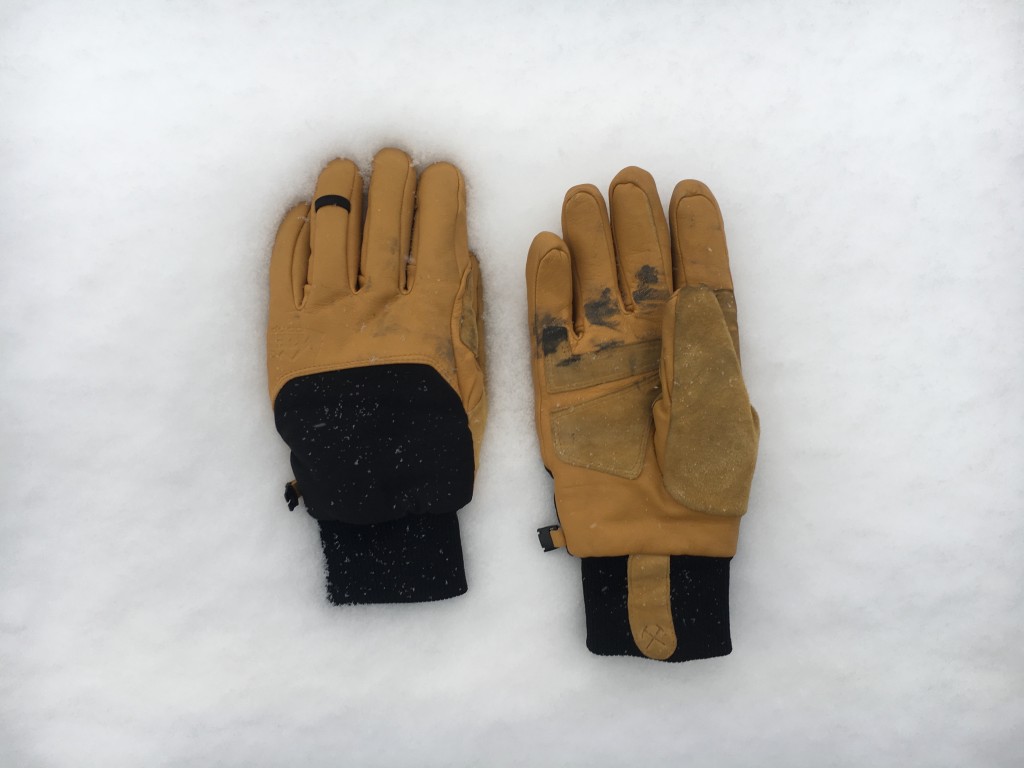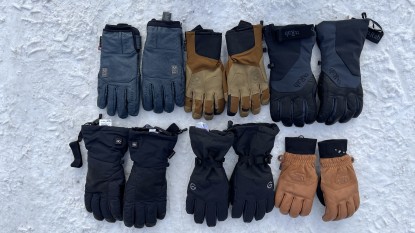REI Co-op Guide Insulated Review
Our Verdict
Our Analysis and Test Results
The REI Guide gloves are adequate for moderate-temperature backcountry and resort skiing and riding, performing best when cold hands were not a threat, but gloves were required. Don't expect them to last forever.
Performance Comparison
Warmth
The Guide provides warmth for temps around 20-25F, but when temps dropped to the teens and below, they were not nearly as warm as some other gloves we tested. While skiing, the soft-shell construction on the back of the glove held up decent to the wind when it was exposed, but it's better to tuck that part mostly under a ski jacket sleeve. Riding the lift is where the cold was felt most in the fingers, and we often found ourselves hiding the entire glove in our sleeve to avoid the wind when sitting idle.
Water Resistance
Moisture was not an issue inside the Guide gloves while skiing unless the breathable soft-shell material on the back of the hands was exposed to snow. This construction was a significant weak point for these gloves and the coldest area of the hands while tested in snow.
The ice bath submersion test was also a setback for the Guide but was not surprising given the lower price and simplicity of the construction. The synthetic upper proved to be the weakest point for moisture. Over a few months, though, these gloves began to wet out more and more readily.
Dexterity
Dexterity is where the Guide gloves picked up the slack left in other categories. The soft-shell construction allows for prime mobility while the sleek stitch pattern stays out of the way for the most important tasks. These gloves arrived pretty soft and didn't really need a break-in time, unlike many burlier leather gloves we have tested. The Guide excelled in many dexterity tests, including knot tying, buckling boots, zipper adjustments, and compatibility with ski pole straps. More technical tasks like managing ropes would be easy with the Guide, but the durability holds them back from being a versatile go-to glove.
Durability
There are several strikes against the Guide for durability. The soft-shell design shows red flags against a long-lasting product. The leather-reinforced palms and thumbs will help, and the stitching in the fingers seems top-notch, the extra-soft leather in the fingers showed wear after a month and a half of use (though this softness does add to dexterity). One tester wore holes through the inner lining of the fingertips in the first few days of use. These are single-season gloves, at best.
Features
The simplicity of the Guide gloves may be what makes them most appealing. They fit extremely well and do not have the need for a wrist cinch due to the rib-knit, under-the-sleeve cuff design. They are easy to slide on and off and a breeze to use with a jacket on. The hang loop adds convenience for drying or attaching to a harness. This glove design (part work glove, part ski glove) typically lacks features, so we weren't surprised in any way here.
Should You Buy the REI Guide Insulated?
The cost-to-performance ratio for the Guide gloves is decent. They are not the warmest, toughest, or most versatile gloves on the market, but that is reflected in the pricing.
What Other Ski Gloves Should You Consider?
Despite their low price, there are much better values on the market. For just a little more money, you could buy the Gordini GTX Storm Trooper II, which outperforms the Guide Insulated in nearly every metric. If you are looking for a high-performance glove, the Rab Khroma Freeride performs almost as well as the best gloves on the market and costs a bit less. If budget isn't a concern, we feel the Arc'teryx Fission SV is the best glove money can buy.










